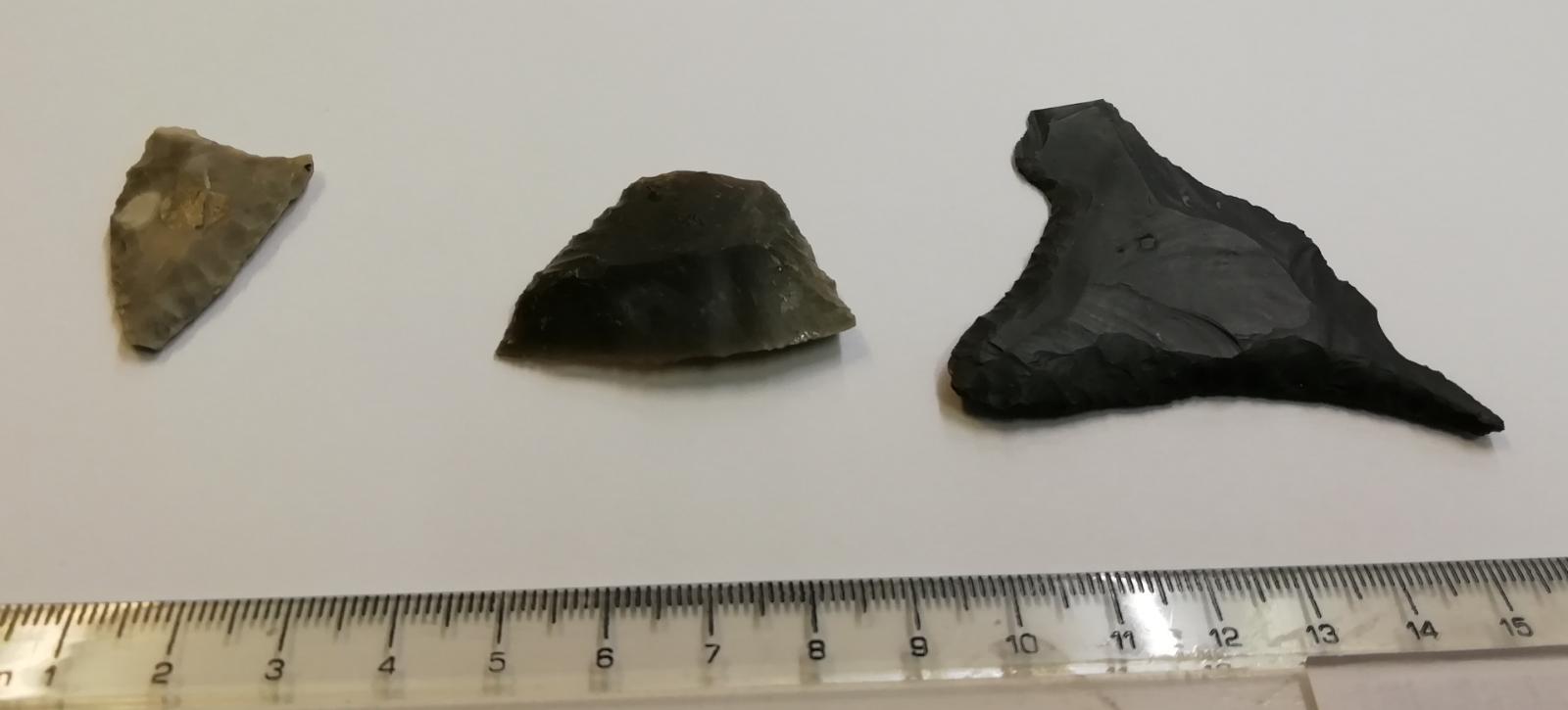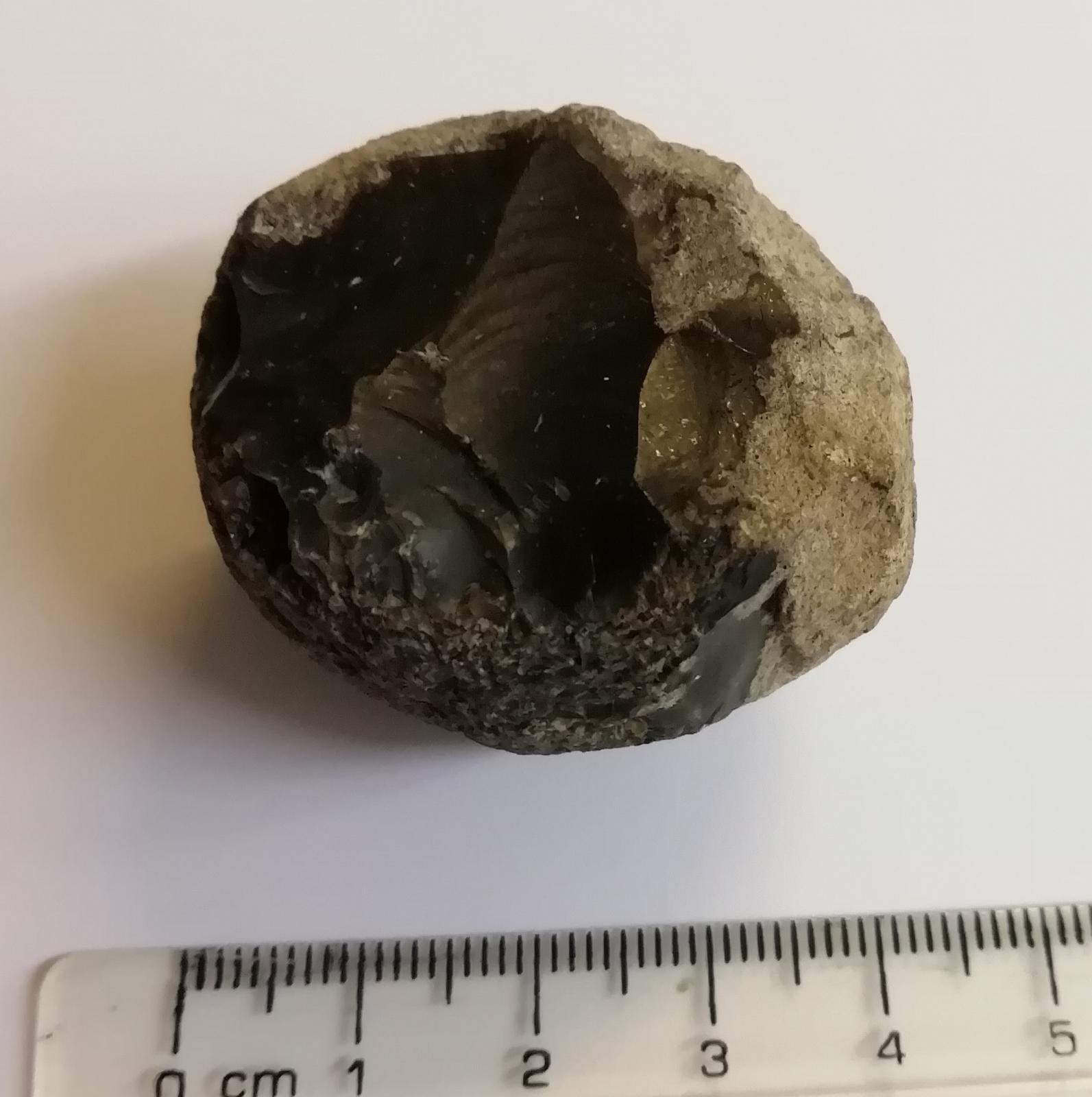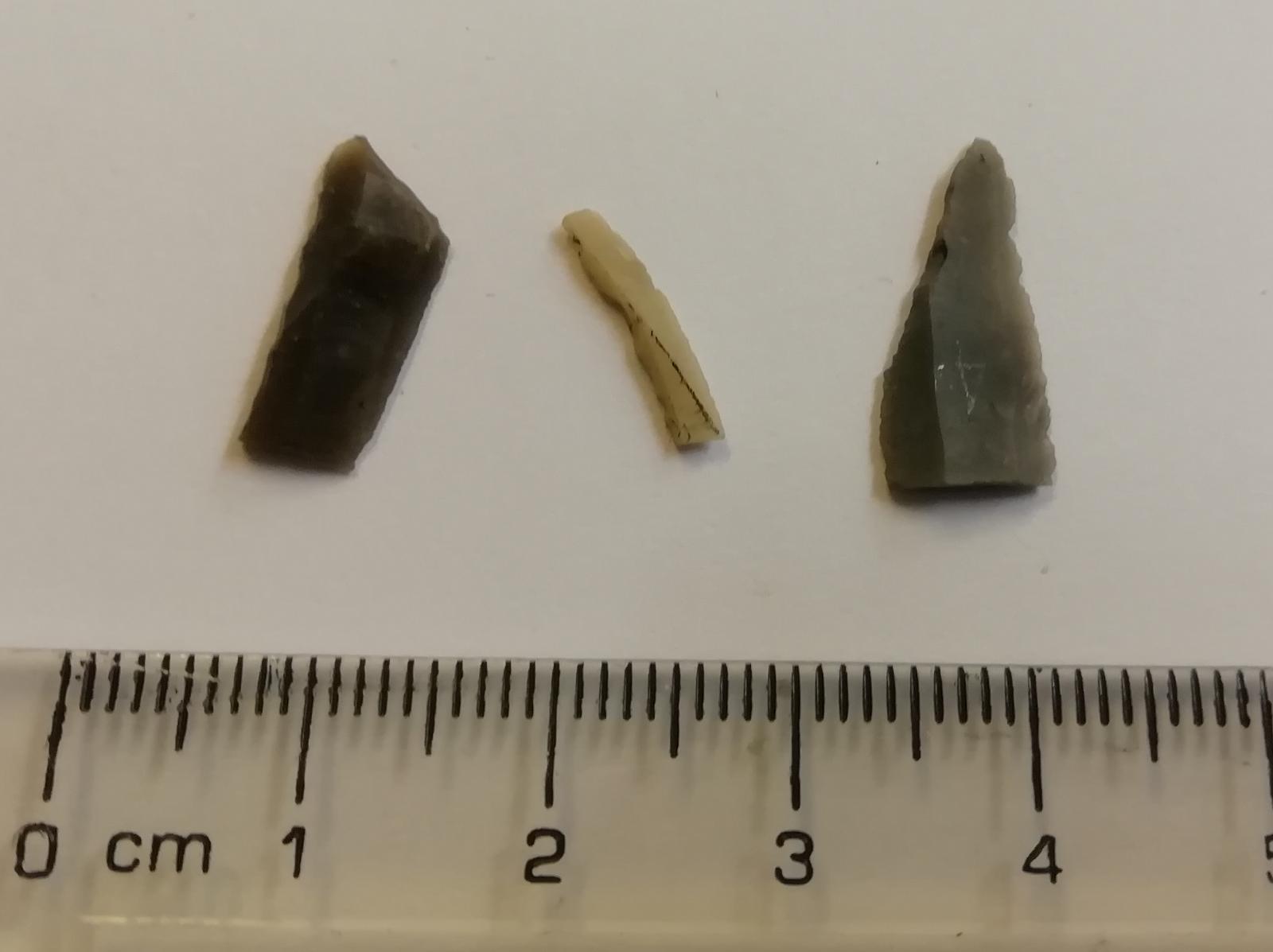Flint Artefacts from Gidleigh Common

If the stones of Dartmoor tell us anything, they tell us that the men who dwelt amid its ancient hills, and set up the menhir and the circle, and built the cairn, honoured those who had gone before.
William Crossing, chronicler of Dartmoor (1847–1928)1
Scorhill Stone Circle on Gidleigh Common is said to be one of the most impressive stone circles on Dartmoor. After visiting, I became curious whether anything had been discovered nearby.
A few websites mention that some artefacts are held in Torquay Museum (probably from an exhibition years ago) – but no online record of what they are. So I arranged a visit to see them. The Engagement and Collections Manager, Barry Chandler, very kindly showed me the box of Gidleigh Common finds and explained what they were used for.
What follows are some of the highlights. (I am very much an amateur – if there are any mistakes in these descriptions, it is because I have misremembered or misunderstood.)
 Neolithic arrowheads, oriented facing the camera. The two on the right have a blade, rather than a point, at the front.
Neolithic arrowheads, oriented facing the camera. The two on the right have a blade, rather than a point, at the front.
 This hammerstone would have been used to fashion other tools.
This hammerstone would have been used to fashion other tools.
 Another angle of the hammerstone.
Another angle of the hammerstone.
 These fabricators are also “tools for making tools”. Their triangular cross section adds strength for the task.
These fabricators are also “tools for making tools”. Their triangular cross section adds strength for the task.
 These four artefacts were in a bag labelled “Mesolithic scrapers”. The two on the left are made of chert, not flint. The one on the right looks like a fabricator but is not such a strong shape; it is an “end scraper”. The third one may be a broken end scraper.
These four artefacts were in a bag labelled “Mesolithic scrapers”. The two on the left are made of chert, not flint. The one on the right looks like a fabricator but is not such a strong shape; it is an “end scraper”. The third one may be a broken end scraper.
 Likely a core, from which tools were created.
Likely a core, from which tools were created.
 This patinated artefact appears to be a tool, though it is an irregular shape. Some of the most ancient flint tools return to being a white colour, but without evidence from context it is likely this is a neolithic artefact that has been in poor conditions for preservation.
This patinated artefact appears to be a tool, though it is an irregular shape. Some of the most ancient flint tools return to being a white colour, but without evidence from context it is likely this is a neolithic artefact that has been in poor conditions for preservation.
 Three (of many) microliths.
Three (of many) microliths.
 Finally, this piece is almost square – possibly a
Finally, this piece is almost square – possibly a neolithic early modern gun flint, for a flintlock firearm.
 Pen and ink drawing of Scorhill stone circle (1893), by John Chudleigh2
Pen and ink drawing of Scorhill stone circle (1893), by John Chudleigh2